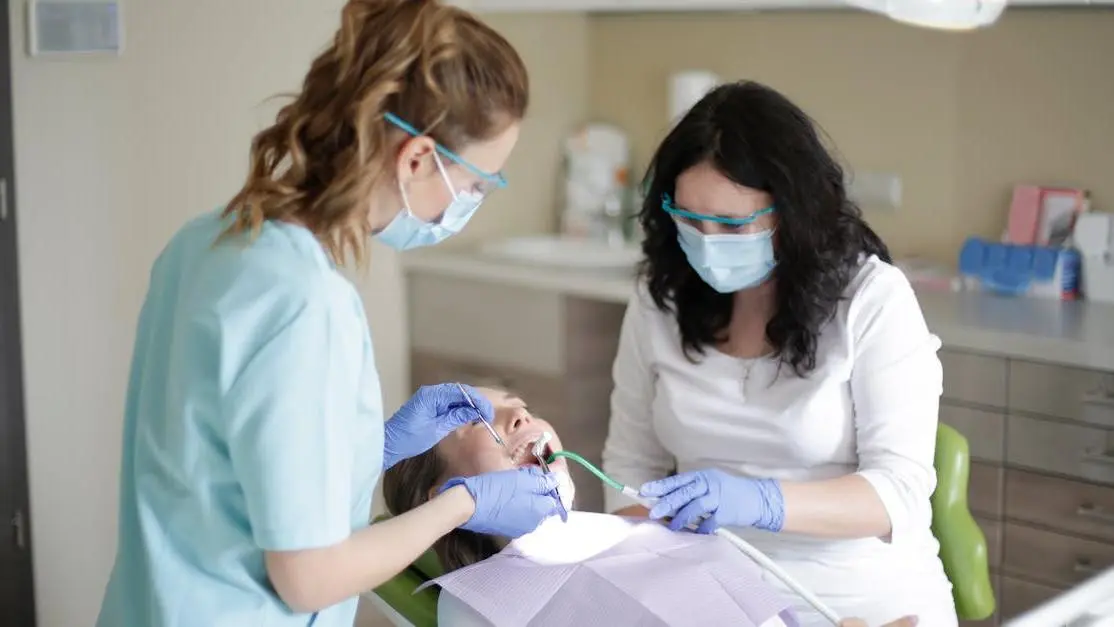Experiencing a gag reflex during dental visits can turn an already daunting appointment into a real challenge. It's a common issue, but it doesn't have to make trips to the dentist unbearable. We understand the discomfort, and that's why we've prepared this helpful guide.
Inside, you'll find ways to:
- Manage your gag reflex during dental visits with proven techniques.
- Uncover the causes, from anxiety to dental instruments, affecting your visit.
- Practice at-home exercises and psychological strategies to ease reflex triggers.
Understanding the Gag Reflex
The gag reflex is more than just a quirk—it's your body's defense system, a reflex action to prevent objects from entering the throat. But its sensitivity can vary, especially during dental visits. That extra sensitivity can make regular dental care feel more like a challenge than a routine appointment. Understanding this reflex is the first step toward managing it effectively during dental visits.
- Biological Mechanism: The gag reflex involves the contraction of throat muscles, triggered when an object touches certain areas of the mouth. It's a protective mechanism against choking and aspiration.
- Why It Happens at the Dentist's: Dental tools and procedures often stimulate the back of the mouth. Instruments, suction devices, and even fingers can trigger the reflex—especially if you're already feeling anxious.
- Individual Differences: Some of us have a more heightened gag reflex due to anxiety, previous bad experiences, or simply our unique anatomy. Each factor plays a part in how we experience dentistry.
Being equipped with this knowledge can help you—and us—tailor dental visits to minimize discomfort and optimize care. We aim to transform this understanding into practical strategies that ensure your visit feels as comfortable as possible, easing any anxiety linked to these triggers.
Common Causes of Gag Reflex During Dental Procedures
When you step into the dental office, several factors could potentially set off your gag reflex. Knowing these culprits helps us address them head-on, creating a more reassuring environment for your dental care.
Potential Triggers
- Anxiety: Fear or nervousness can heighten sensitivity to stimuli, making you more likely to gag.
- Tool Placement: Instruments touching the soft palate or the tongue's back can trigger reflexes.
- Positioning: If the dental chair is reclined too far back, it may cause a sensation of lack of control, which amplifies the reflex. We keep this in mind to adjust positioning for maximum comfort.
Understanding these causes allows us to develop targeted interventions and adjust our techniques to meet your individual needs. By reducing these triggers, we aim to minimize the reflex and make your experience as smooth as possible.
Pre-Visit Strategies to Reduce Gag Reflex
Preparation can play a significant role in easing the gag reflex's impact. By adopting a few pre-visit strategies, you can enter the office feeling more at ease—setting the stage for a relaxed experience.
Steps to Take
- Deep Breathing: Practice deep breathing exercises to calm anxiety. This reduces tension and can significantly weaken the gag reflex.
- Desensitization: Gently brush the back of your tongue daily. This helps your body get used to stimuli and decreases the gag reflex's severity over time.
- Communicate: Talk openly with us about your gag reflex concerns. Our team thrives on feedback, adapting techniques and tools to cater to your comfort. Your input makes a difference.
Implementing these strategies empowers you to proactively manage your gag reflex, making the dental experience less daunting.
Techniques Dental Professionals Use to Alleviate Gag Reflex
Our goal is to make your dental visit as pleasant as possible. To do this, we employ various techniques specifically designed to ease the gag reflex, ensuring your comfort throughout.
Methods in Practice
- Position Adjustments: By slightly inclining the chair, we help minimize the gag reaction. This position gives you a sense of control and reduces the feeling of the reflex being triggered.
- Smaller Tools: We utilize smaller, less intrusive instruments to make interactions with sensitive areas gentler.
- Distraction Techniques: Engaging in conversation, listening to music, or watching videos during your appointment focuses your mind elsewhere, decreasing reflex sensitivity.
- Topical Numbing Agents: Applying these can provide a temporary numbing sensation, reducing the reflex's response to touch.
Alleviating the gag reflex is a priority for us, ensuring each visit feels comfortable and free from hassle.
With these strategies, we aim to transform your dental experience from nerve-wracking to nerve-easing. By integrating comfort-focused techniques, we foster an environment where care and understanding take center stage, helping to minimize your gag reflex effectively.
At-Home Exercises to Manage Gag Reflex
Taking steps at home to manage your gag reflex can make a big difference when it's time for a dental visit. By incorporating simple exercises into your routine, you can gradually desensitize your reflex and build confidence in your ability to handle dental procedures.
Practical Exercises
- Tongue Stretches: Stick out your tongue and hold it in place for a few seconds. This exercise causes you to get used to pressure around the back of your mouth.
- Gargling: Regular gargling with water strengthens throat muscles and familiarizes your body with the sensation of liquid near the throat, easing the reflex.
- Controlled Breathing: Practice breathing through your nose slowly and consistently. It helps during procedures to stay calm and focused on something besides your mouth.
- Desensitization with Toothbrush: Touch the back of your tongue with a toothbrush daily to gradually reduce sensitivity.
- Mindful Swallowing: Focus on the act of swallowing without gagging. This familiarizes your throat with handling reflex triggers.
These exercises, when performed consistently, can lower the sensitivity of your gag reflex, making each dental visit easier to navigate.
Psychological Approaches to Managing Gag Reflex
Sometimes, the mind plays as much of a role as the body in controlling the gag reflex. Psychological strategies allow you to approach dental visits with a sense of control and calmness, helping manage the reflex more effectively.
Mind Over Matter
- Visualization: Picture yourself calmly completing a dental procedure without discomfort. This exercise can train your mind to lessen physical reactions.
- Positive Affirmations: Repeating phrases like "I am relaxed" or "I can handle this" reinforces a state of calm and lessens anxiety.
- Progressive Muscle Relaxation: This technique involves tensing and relaxing muscles, which can reduce overall stress before you visit the dentist.
- Cognitive Behavioral Techniques: Identifying and challenging anxious thoughts will help reduce anticipatory stress to the gag reflex.
Practicing these approaches can significantly decrease anxiety and the involuntary reactions associated with dental visits.
When to Seek Professional Help for Gag Reflex Issues
Sometimes the gag reflex might require more than just home strategies. If your reflex continues to be a major barrier to necessary dental care, it might be time to consider professional interventions.
Signs You May Need Help
- Persistent Difficulty: If no amount of practice seems to improve your reflex response, consulting a specialist might be the next step.
- Inability to Complete Procedures: When gagging results in incomplete treatments, it's critical to address it professionally to ensure your dental health.
- Severe Anxiety: If your fear and anxiety are insurmountable, behavioral therapy can help address underlying issues.
Our team stands ready to explore advanced solutions with you, aiming to cater to every patient's unique needs and ensure successful dental care.
Conclusion
Navigating dental visits with a sensitive gag reflex doesn’t need to be daunting. By understanding the reflex, identifying triggers, and utilizing both at-home and professional strategies, you can comfortably and confidently maintain your oral health. Remember, you’re not alone—our experienced team is committed to supporting you every step of the way, transforming your dental experience into something positive and stress-free.

